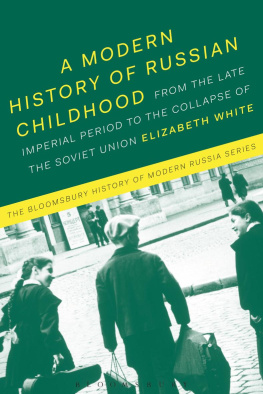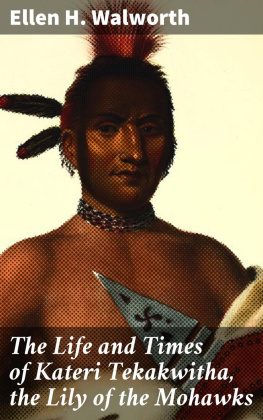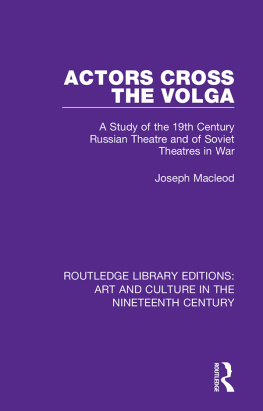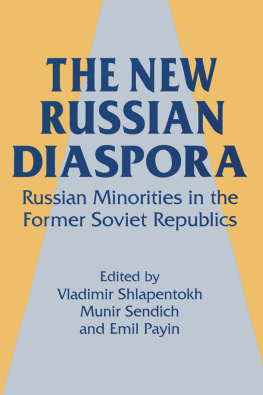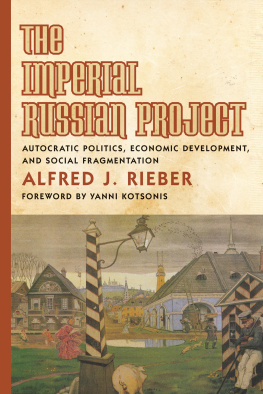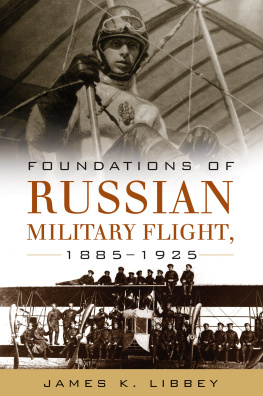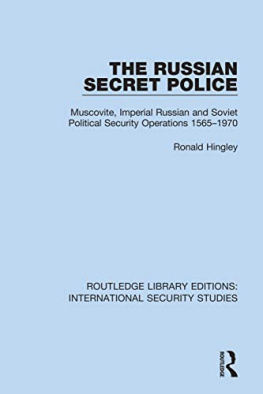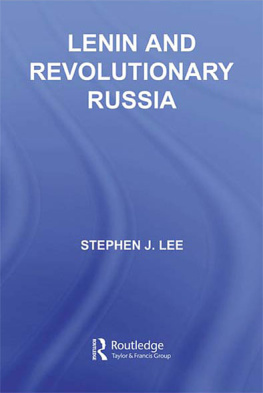Walworth - Soviet salvage: imperial debris, revolutionary reuse, and Russian constructivism
Here you can read online Walworth - Soviet salvage: imperial debris, revolutionary reuse, and Russian constructivism full text of the book (entire story) in english for free. Download pdf and epub, get meaning, cover and reviews about this ebook. City: University Park;Pa, year: 2017, publisher: Pennsylvania State University Press, genre: Politics. Description of the work, (preface) as well as reviews are available. Best literature library LitArk.com created for fans of good reading and offers a wide selection of genres:
Romance novel
Science fiction
Adventure
Detective
Science
History
Home and family
Prose
Art
Politics
Computer
Non-fiction
Religion
Business
Children
Humor
Choose a favorite category and find really read worthwhile books. Enjoy immersion in the world of imagination, feel the emotions of the characters or learn something new for yourself, make an fascinating discovery.
Soviet salvage: imperial debris, revolutionary reuse, and Russian constructivism: summary, description and annotation
We offer to read an annotation, description, summary or preface (depends on what the author of the book "Soviet salvage: imperial debris, revolutionary reuse, and Russian constructivism" wrote himself). If you haven't found the necessary information about the book — write in the comments, we will try to find it.
Walworth: author's other books
Who wrote Soviet salvage: imperial debris, revolutionary reuse, and Russian constructivism? Find out the surname, the name of the author of the book and a list of all author's works by series.
Soviet salvage: imperial debris, revolutionary reuse, and Russian constructivism — read online for free the complete book (whole text) full work
Below is the text of the book, divided by pages. System saving the place of the last page read, allows you to conveniently read the book "Soviet salvage: imperial debris, revolutionary reuse, and Russian constructivism" online for free, without having to search again every time where you left off. Put a bookmark, and you can go to the page where you finished reading at any time.
Font size:
Interval:
Bookmark:

SOVIET
SALVAGE


Library of Congress Cataloging-in-Publication Data
Names: Walworth, Catherine, author.
Title: Soviet salvage : imperial debris, revolutionary reuse, and Russian constructivism / Catherine Walworth.
Other titles: Refiguring modernism.
Description: University Park, Pennsylvania : The Pennsylvania State University Press, [2017] | Series: RM : refiguring modernism | Includes bibliographical references and index.
Summary: Examines how Russian Constructivist artists in the 1920s imagined a new physical environment through the creation of recycled and reappropriated objectsProvided by publisher.
Identifiers: LCCN 2016054606 | ISBN 9780271077697 (cloth : alk. paper)
Subjects: LCSH: Constructivism (Art)Russia (Federation) | Art, Russian20th century.
Classification: LCC N6988.5.C64 W35 2017 | DDC 709.47/09042dc23
LC record available at https://lccn.loc.gov/2016054606
Copyright 2017 Catherine Walworth
All rights reserved
Printed in China
Published by The Pennsylvania State University Press,
University Park, PA 16802-1003
The Pennsylvania State University Press is a member of the Association of American University Presses.
It is the policy of The Pennsylvania State University Press to use acid-free paper. Publications on uncoated stock satisfy the minimum requirements of American National Standard for Information SciencesPermanence of Paper for Printed Library Material, ANSI Z 39.481992.
Additional credits: frontispiece, image A. Rodchenko & V. Stepanova Archive, Moscow; vi (, detail), image A. Rodchenko & V. Stepanova Archive, Moscow, art Estate of Alexander Rodchenko / RAO, Moscow / VAGA, New York.
 CONTENTS
CONTENTS

Though it has come quite a long way in the intervening years, this book emerged from a series of graduate school investigations at The Ohio State University that, inadvertently, reflected my environmentalists belief in recycling. Dr. Aron Vinegar pointed this out to me one day and introduced me to Lvi-Strausss idea of the bricoleur , for which I am forever grateful. He made theory refreshingly accessible for a social historian and spurred me on to deeper critical thinking and investigation. I would like to express particularly heartfelt appreciation to Dr. Myroslava M. Mudrak, who encouraged me to adhere to my own instincts as an art historian, to take risks, and to embrace the unconventional. Dr. Mudrak was a constant source of support and encouragement to me during my graduate school years (her conscientious reading of my drafts was nothing short of herculean), and she has become my valued friend and colleague in everyday life afterward.
It was an absolute pleasure to study early film with Dr. J. Ronald Green, particularly the hours of Russian films and writings we mulled over. He also asked me one of the most foundational questions of my career, one that I have carried into intellectual and curatorial projects ever since: If someone has nearly fallen out of history, why do they deserve to be reinstated? As an art historian who loves underserved subjects, this question has become my guide. Dr. Patricia A. Cunningham led me to discover that fashion studies have much to teach art historians about fresh consideration of objects, both their physical intricacies and cultural meanings. Dr. Lisa Florman not only offered valuable counsel on my central argument but also helped me to obtain important travel and research grants, without which this project would not have been realized. I am particularly grateful for the Aida Cannarsa Snow Endowment Fund in the College of the Arts, which supported two trips to Russia, for The Ohio State Universitys Presidential Fellowship, which allowed me to concentrate on unencumbered writing, and to my friends at the Center for Slavic and East European Studies, who helped with access to rare Russian films and grant assistance.
This text would have remained a scholarly exercise, however, if it were not for the professional advice of Dr. Jessica Burstein (the paragon who first inspired and indulged my falling in love with the many forms of modernism), proposal assistance by my talented friend Heather Brand, and the unwavering support of Executive Editor Eleanor H. Goodman at the Pennsylvania State University Press and Dr. Jonathan Paul Eburne, series editor. I would also like to thank the anonymous readers, whose thoughtful criticism helped push me to develop the text beyond its initial constraints. While one could revise a text forever, like Penelope at her loom, at some point Odysseus simply must come home. I am grateful, though, for the opportunity of these last few years to make corrections and reconsider my framework in a fresh light. If some of the original exuberant language of discovery has been tempered in exchange for a more measured analysis, I hope some of it still remains.
In Russia, I would like to thank Elena Mikhailovna Vorushilina, curator at the Museum of Decorative-Applied and Folk Arts in Moscow, with whom I spent a lovely afternoon in storage exploring their collection of Soviet propaganda porcelain, handling each piece from all sides the way it was intended. It was a distinct honor to meet with Tamara Timofeevna Korchunova and Nina Ivanovna Tarasova, costume curators at the State Hermitage Museum. Together, they not only pulled Lamanova dresses for me to handle, gowns that were the subject of Korchunovas groundbreaking 2002 exhibition Russkii modeler: Nadezhda Lamanova ( 18611941 ), but also let me peek into drawers of Romanov clothing with infectious joy. Elena Obuhovich of the Rights and Reproductions Office at the State Hermitage Museum was endlessly kind and generous, as was Ekaterina Zadirova at the Pushkin State Museum of Fine Arts, Moscow. I would also like to thank Dr. Maria Alley, who helped me hone my Russian correspondence and, during one initial trek to Moscow archives, served as interpreter when my nerve faltered in the unexpected presence of an idols descendent.
I have had an art historians crush on the Wolfsonian Museum in Miami for decades, and it was a dream to visit their art storage and work with their librarys collection of rare Russian publications. My sincere thanks goes out to registrars Kimberly J. Bergen, Amy Silverman, and Chief Librarian Frank Luca, who all generously supported my project, not least with beautiful new photography.
Dr. John E. Bowlt deserves my sincere gratitude, now and forever, for his wealth of published research and support of important fellowship applications. Elizabeth Durst was a kind and generous scholar, ready to share her Russian contacts, and her dissertation was an important resource for conceptualizing Nadezhda Lamanovas Silver Age years in Moscow. Aleksandr Lavrentiev, grandson of Aleksandr Rodchenko and Varvara Stepanova, was a generous source of images and information, and I am overwhelmed by his natural and infinite kindness.
My far-flung friend, the historian and translator John Johnson, was an essential help in Moscow. He returned to the Russian State Library in Moscow, where I took research photographs of journals in 2010 and 2011, and obtained new images that make up so much of the illustration program of this book. I get to benefit from his having thrown himself into an adventurous Russian life. Laurel Mitchell, my compatriot from Carnegie Museum of Art, took those images to a new level. My former colleague at the Cleveland Museum of Art, Elizabeth Saluk, was another wonderful help with photography. Thank you to my friend and scholar Julie Defossez for keeping rare books on hand for when I needed them and for providing images and support.
Font size:
Interval:
Bookmark:
Similar books «Soviet salvage: imperial debris, revolutionary reuse, and Russian constructivism»
Look at similar books to Soviet salvage: imperial debris, revolutionary reuse, and Russian constructivism. We have selected literature similar in name and meaning in the hope of providing readers with more options to find new, interesting, not yet read works.
Discussion, reviews of the book Soviet salvage: imperial debris, revolutionary reuse, and Russian constructivism and just readers' own opinions. Leave your comments, write what you think about the work, its meaning or the main characters. Specify what exactly you liked and what you didn't like, and why you think so.


